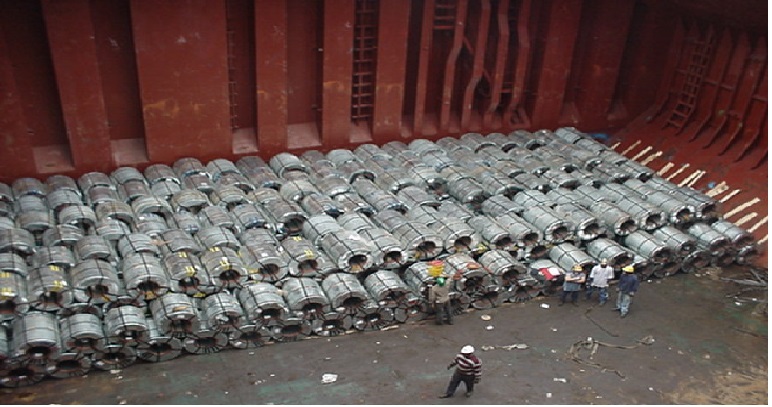Steel is a very high-density cargo, to avoid damage to the ship’s structure and to enable an even weight distribution, carefully apply dunnage between the ship and cargo, and within cargo tiers.
Steel is shipped in a variety of shapes, sizes and weights. Consequently, it is difficult to stow in classic block stowage. Careful preparation of the hold is essential.
- Steel coils should be stowed across the ship, on stout dunnage, with their axis fore and aft.
- Use wedges to safely locate coils during loading. Base coils should be loaded from the ship’s side inwards to the centre and wedged, with the wedges placed below on their in-board side.
- Once at sea, the ship’s motion will cause the coils to settle as the weight of the key coils tightens the stow. Wedges placed either side of a coil will prevent this. However, when more than one key coil is used, and to locate their position during loading, double wedging is necessary on either side of the centre supporting coil(s).
- Coils are secured with steel banding to each other in varying forms.
- Pneumatically tightened steel bands, binding the coils to those stowed immediately below, are preferred.
- Key coils are positioned so that their bottom edges are one-third of a coil’s diameter below the top of the coils in the tier being locked, in a gap that is not greater than 60% of the key coil’s diameter.
Dunnage is applied to:


Leave a Comment